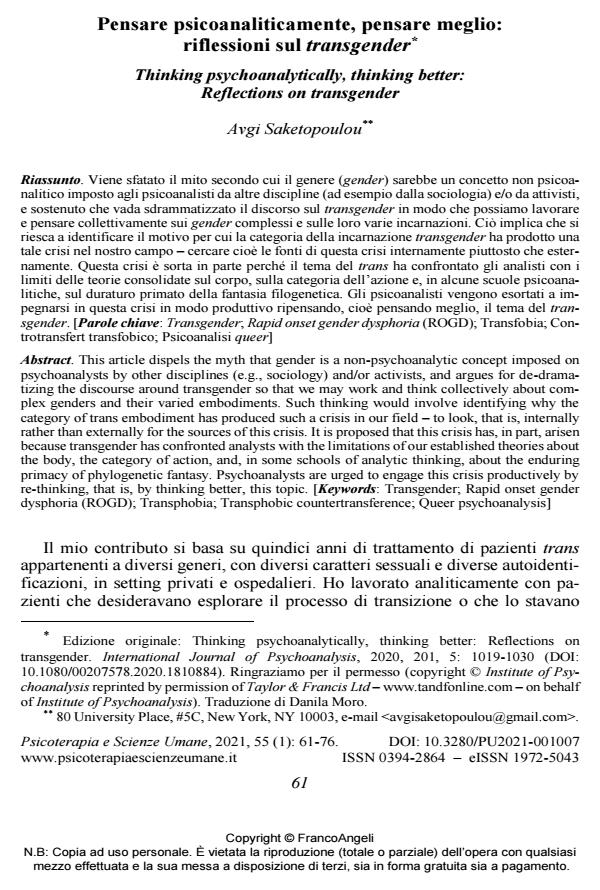Thinking psychoanalytically, thinking better: Reflections on transgender
Journal title PSICOTERAPIA E SCIENZE UMANE
Author/s Avgi Saketopoulou
Publishing Year 2021 Issue 2021/1
Language Italian Pages 16 P. 61-76 File size 341 KB
DOI 10.3280/PU2021-001007
DOI is like a bar code for intellectual property: to have more infomation
click here
Below, you can see the article first page
If you want to buy this article in PDF format, you can do it, following the instructions to buy download credits

FrancoAngeli is member of Publishers International Linking Association, Inc (PILA), a not-for-profit association which run the CrossRef service enabling links to and from online scholarly content.
This article dispels the myth that gender is a non-psychoanalytic concept imposed on psychoanalysts by other disciplines (e.g., sociology) and/or activists, and argues for de-dramatizing the discourse around transgender so that we may work and think collectively about complex genders and their varied embodiments. Such thinking would involve identifying why the category of trans embodiment has produced such a crisis in our field – to look, that is, internally rather than externally for the sources of this crisis. It is proposed that this crisis has, in part, arisen because transgender has confronted analysts with the limitations of our established theories about the body, the category of action, and, in some schools of analytic thinking, about the enduring primacy of phylogenetic fantasy. Psychoanalysts are urged to engage this crisis productively by re-thinking, that is, by thinking better, this topic.
Keywords: Transgender; Rapid onset gender dysphoria (ROGD); Transphobia; Transphobic countertransference; Queer psychoanalysis
Avgi Saketopoulou, Pensare psicoanaliticamente, pensare meglio: riflessioni sul transgender in "PSICOTERAPIA E SCIENZE UMANE" 1/2021, pp 61-76, DOI: 10.3280/PU2021-001007